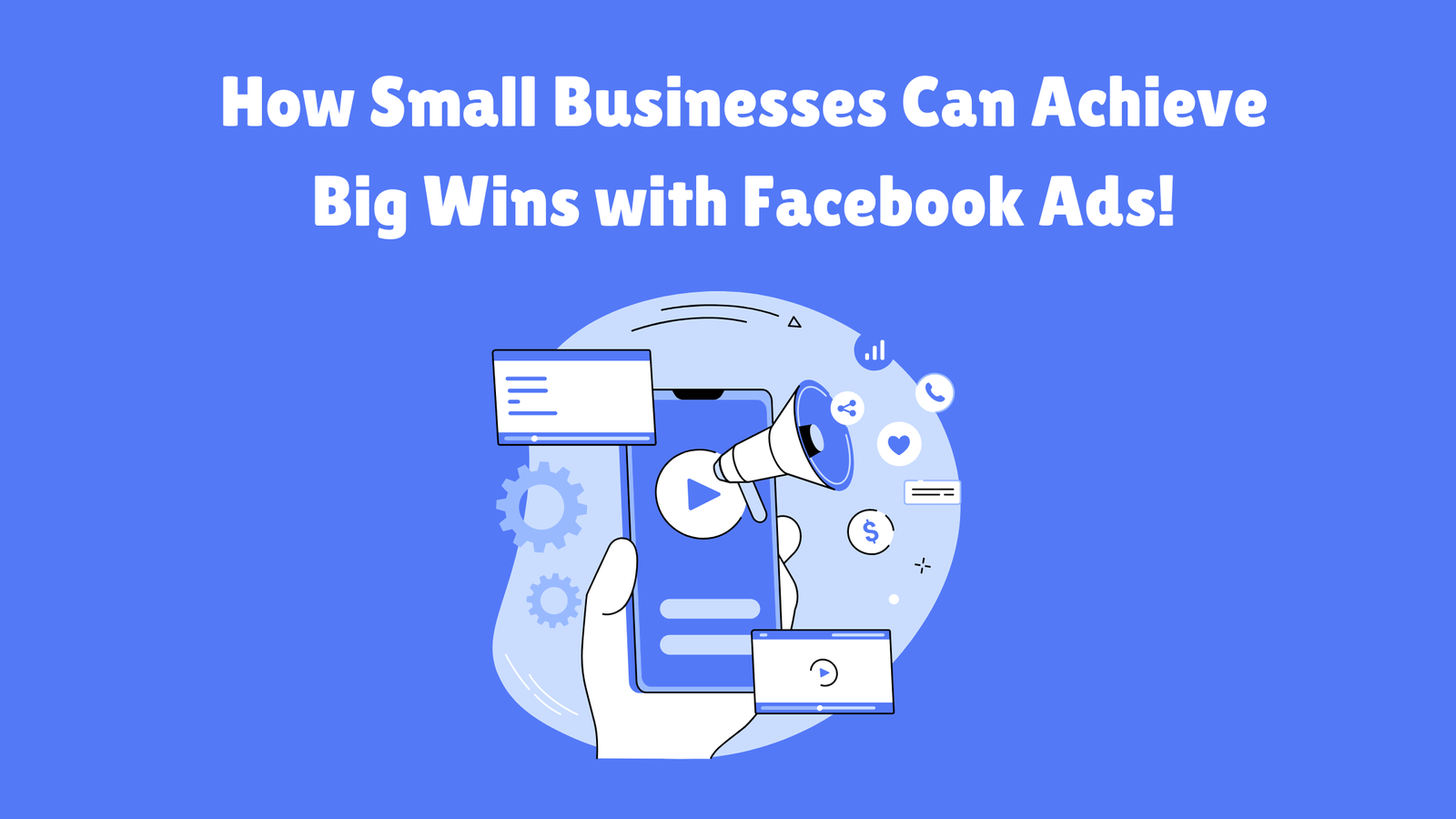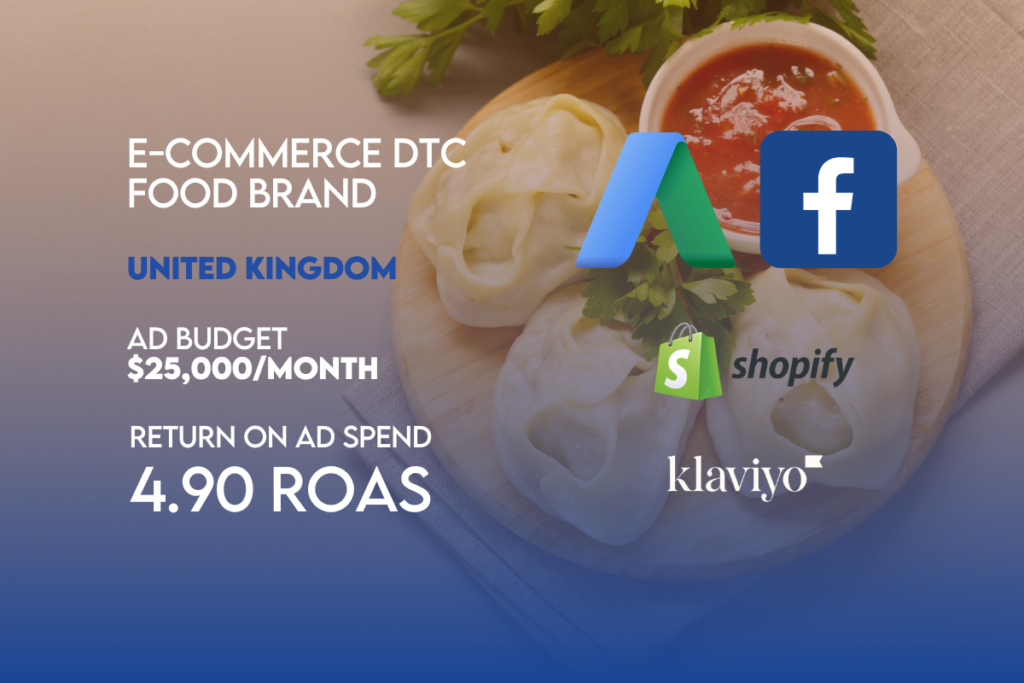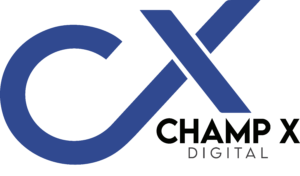How Small Businesses Can Achieve Big Wins with Facebook Ads!

Introduction: Advertising on Facebook
In today’s digital marketplace, Facebook stands as a vital channel for small businesses aiming to expand their visibility and engage with a broader audience. Leveraging Facebook’s extensive network allows businesses of all sizes to advertise efficiently and effectively.
Overview of the importance of Facebook ads for small businesses
Facebook meta ads are an indispensable tool for small businesses due to their ability to target specific demographics precisely. With over 2 billion active users, Facebook offers a platform where businesses can reach potential customers who are most likely to be interested in their products or services. This is facilitated through Meta’s sophisticated Ads Manager, which provides comprehensive tools for targeting based on users’ location, age, interests, and more. Such targeted advertising ensures that marketing budgets are used efficiently, yielding higher engagement rates and improving overall marketing ROI.
Brief mention of the potential ROI and reach of Facebook advertising
The potential return on investment (ROI) from Facebook meta advertising can be substantial. By utilizing detailed targeting options and engaging ad formats like video views, carousel ads, and more, businesses can significantly increase their brand awareness and drive conversions. Facebook’s global reach also offers a unique advantage, allowing small businesses to expand their market beyond local boundaries effortlessly. The Ads Manager helps in optimizing campaigns continuously, enhancing the ability to reach and convert users effectively across Facebook, which ultimately contributes to a higher ROI. Whether aiming to increase brand awareness, promote a product or service, or drive traffic to a landing page, Facebook meta ads provide a scalable solution to meet diverse business needs.

With these tools and strategies, even small businesses with limited budgets can achieve remarkable results, making Facebook a cornerstone of modern digital advertising strategies.
Understanding Facebook Ads
Facebook meta ads are a dynamic and versatile component of digital marketing that enable businesses to target and engage with specific audiences on one of the world’s largest social media platforms. These ads are managed through the Facebook Ads Manager, part of Meta’s suite of advertising tools, allowing detailed control over ad placements, budgeting, and optimization. If you’re seeking to leverage the power of Facebook meta ads for your business, our expert Facebook ads services can help you craft compelling campaigns and maximize your ROI.
Explanation of what Facebook ads are and how they work
Facebook meta ads are essentially paid messages from businesses that are crafted to reach a particular audience. This audience selection is based on a wealth of demographic, geographic, and interest-based data. When creating a Facebook ad, marketers can choose their objectives, target audience, and the placement of their ads across Facebook’s various offerings, including Instagram and the broader Audience Network. The process involves setting up an ad campaign in the Facebook Ads Manager, where you can specify everything from your campaign objective to the ad budget and bid strategy. The platform also provides robust tracking and analytics tools, helping marketers measure the effectiveness of their campaigns in real time.
Types of Facebook ads
Facebook offers a variety of ad formats to cater to the diverse needs of advertisers, each designed to achieve specific business objectives, such as increasing brand awareness, generating leads, or driving traffic to a website. Here are some common types of Facebook ads:
Image Ads: These are simple ads that use a single photo to promote a product or service. They are quick to create and can be very effective in catching the eye of potential customers.
Video Ads: These ads use video content to tell a more in-depth story or demonstrate a product in action. Video ads can run in News Feed and Stories, or they can appear as in-stream ads in longer Facebook videos.
Carousel Ads: Carousel ads allow advertisers to showcase up to ten images or videos within a single ad, each with its own link. They are perfect for highlighting different features of a product or telling a step-by-step story.
Slideshow Ads: These ads create a video-like experience with fast-loading images, ideal for connecting with audiences with slower internet connections.
Collection Ads: These ads offer a more immersive experience, allowing users to click on an ad to browse more products in a full-screen format without leaving Facebook. This type is particularly useful for e-commerce advertisers looking to promote multiple products.
Lead Ads: Specifically designed for lead generation, these ads include a built-in form that potential customers can complete without leaving Facebook, making it easy to gather information like email addresses, names, and more.
Each type of ad has its unique advantages and can be used strategically to maximize campaign results. Whether it’s a single-image ad designed to boost brand awareness or a detailed carousel ad aimed at showcasing various features of a product, Facebook’s diverse ad options offer marketers the flexibility to create tailored advertising strategies.
Setting Clear Objectives
For any Facebook advertising campaign to succeed, it must start with clear, well-defined objectives. These objectives not only guide the planning and execution of the campaign but also provide a benchmark against which its success can be measured.
Importance of having clear marketing goals
Clear marketing goals are crucial because they help focus your advertising efforts and align them with your overall business objectives. Whether the goal is to increase brand awareness, drive traffic to a website, or generate sales, having a specific target in mind ensures that every aspect of your Facebook ad campaign—from the ad design to the target audience and budgeting—is optimized to achieve that goal. Moreover, clear goals help in monitoring the campaign’s progress and making necessary adjustments to improve effectiveness and maximize ROI.
How to set SMART goals for Facebook advertising campaigns
SMART goals are specific, measurable, achievable, relevant, and time-bound. Setting SMART goals for Facebook advertising campaigns involves the following steps:
Specific: Define what you want to achieve with your campaign. Instead of a general goal like “increase visibility,” aim for something more precise, such as “increase website visits by 20%.”
Measurable: Ensure that the goal can be quantified. This involves setting up key performance indicators (KPIs) such as the number of conversions, the amount of engagement, or the reach of your ads. Utilizing tools like Facebook’s Ads Manager can help track these metrics effectively.
Achievable: Your goals should be realistic and attainable given your resources. This means considering your budget, the size of your target audience, and your current brand presence.
Relevant: The goals should align with broader business objectives. For instance, if the overall aim is to increase sales during a particular season, your Facebook campaign should focus on promoting products or offers that are likely to drive sales during that period.
Time-bound: Set a clear timeline for achieving the goals. This not only keeps the campaign focused but also allows you to better measure its effectiveness over a specific period. Decide whether the campaign will run for a few days, several weeks, or continuously throughout a quarter.
By setting SMART goals, you ensure that every Facebook ad campaign has a clear direction and purpose, and you set the stage for measuring its success in a meaningful way. This strategic approach to goal setting helps to optimize your ad spend and ensures that the campaigns contribute positively towards your business’s growth objectives.
Targeting The Right Audience
Identifying and targeting the right audience is fundamental to the success of any Facebook ad campaign. Facebook’s robust targeting capabilities allow you to pinpoint your ideal customers based on a myriad of demographic, geographic, and psychographic characteristics.
How to identify and target your ideal customer demographic on Facebook
To effectively target your ideal customers on Facebook, you first need to understand who they are. This involves creating detailed buyer personas that represent your typical customers. These personas should include demographic information (like age and gender), geographic details, interests, and behaviors. Consider factors such as:
Demographics: Age range, gender, education level, and job title.
Geographic Location: Cities, countries, or regions where your customers live.
Interests: Hobbies, entertainment preferences, and other interests that align with your product.
Behaviors: Online behaviors such as shopping patterns and brand interactions.
Once you have defined your buyer personas, you can use Facebook’s Ads Manager to target these specific groups. The platform allows you to customize your audience to an impressive degree. For instance, if you’re selling fitness equipment, you might target users interested in health and fitness, nutritional supplements, or specific fitness influencers.
The role of Facebook’s targeting features, like location, age, interests, and behaviors
Facebook’s targeting features are designed to help you reach your audience with precision:
Location Targeting: Allows you to target ads to people based on their location. This can be as broad as a country or as specific as a zip code or a radius around a location. This feature is particularly useful for local businesses that want to drive foot traffic to their stores.
Demographic Targeting: Enables you to refine your audience based on age, gender, education, relationship status, and more. This ensures that your ads are seen by the segment of the population that is most likely to be interested in your offering.
Interest Targeting: Facebook tracks user activity and interests, allowing you to target people based on their interests, hobbies, and pages they follow. This can help you reach users who are likely to be interested in your products or services based on their online behavior and preferences.
Behavioral Targeting: You can target users based on their behavior patterns, including previous purchases and device usage. This data can help you reach customers who have shown a propensity to purchase products similar to yours or who have engaged with your competitors’ ads.
Creating Compelling Ad Content
Creating compelling content for your Facebook ads is crucial for capturing attention and driving action. Each ad should be thoughtfully crafted with engaging copy and visuals that resonate with your target audience.
Tips for creating engaging and persuasive ad copy and visuals
To create Facebook ads that stand out:
Highlight Key Benefits: Clearly articulate the benefits of your product or service. Use persuasive language that speaks directly to the viewer’s needs and desires.
Use High-Quality Images: Visuals are often the first thing people notice. Use high-quality images or videos that are relevant and appealing. A single-image ad or a well-constructed video can significantly increase engagement.
Include a Strong Call to Action (CTA): Every ad should have a clear CTA, such as “Shop Now,” “Learn More,” or “Sign Up.” This directs the users on what to do next.
Keep It Concise: Facebook users scroll quickly, so keep your message brief and to the point. Make sure your main message is conveyed within the first few lines of text.
Test Different Ad Types: Experiment with different ad types (image, video, carousel, etc.) to see which one resonates most with your audience. Each type can be used to achieve different goals, like brand awareness or product promotion.
Optimizing Budget and Bidding
Managing your advertising budget effectively is key to maximizing the return on your Facebook ad spend.
Strategies for setting and managing your ad budget
Define Your Budget: Decide how much you want to spend on your ad campaign. You can set a daily budget or a lifetime budget, depending on how long you plan to run your ad.
Use Ads Manager for Budget Control: Facebook’s Ads Manager lets you oversee your budget and modify it based on the campaign’s performance. It provides tools to set your budget at the ad set level, allowing for precise control over spending.
Optimize for Cost Per Click (CPC): Monitor your CPC to ensure you are getting a good return on investment. The average cost per click can vary widely based on your targeting and ad quality.
Consider Bidding Strategies: Facebook offers different bidding strategies that can help you manage how competitively you bid for ad placement. Choose a strategy based on your campaign objective, whether it’s maximizing ad exposure or controlling costs.
Testing and Measuring Ad Performance
Consistent testing and measurement are vital to refining your Facebook advertising strategy and achieving optimal performance.
Importance of A/B testing different elements of your ads
Test Everything: From ad copy to visuals, placement, and even the time of day, testing different elements can dramatically affect the performance of your ads.
Use Facebook’s Split Test Feature: This feature allows you to test different versions of your ads to see which performs best. You can test variations in your ad’s audience, delivery optimization, and even its positioning across Facebook’s family of apps and services.
Analyze Performance Metrics: Key performance indicators like conversion rates, video views, and engagement levels should be monitored regularly to gauge the success of your ads and guide future strategies.
Scaling Your Facebook Ads
Once you have a winning Facebook ad campaign, scaling it effectively can lead to greater reach and increased profits.
When and how to scale up your Facebook advertising efforts
Increase Your Budget Gradually: If your ads are performing well, slowly increase your budget and monitor the performance. Make sure the increase in spending still results in a positive ROI.
Expand Your Target Audience: Look into similar audience segments you might not have targeted initially. Use Facebook’s lookalike audiences to reach new people who are likely to be interested in your business.
Optimize for Ad Placement: As you scale, experiment with different ad placements across Facebook and its related platforms like Instagram. Placement optimization can help maximize your ad reach and effectiveness.
Leverage Success Metrics: Use the data from your successful ads to refine and improve your upcoming campaigns. Continuous learning from each ad’s performance is key to scaling effectively.
By following these strategies, you can create, manage, and scale Facebook advertising campaigns that not only meet but exceed your business objectives. Remember, the key to success with Facebook ads lies in continuous testing, adapting, and refining based on performance data.
Key Takeaways
Effective Facebook advertising combines strategic planning with creative execution. Utilize Facebook’s Ads Manager to set clear campaign objectives, manage your ad placements, and control bidding strategies to optimize costs. Diverse ad formats like single-image, carousel, or full-screen video ads can cater to various marketing goals, while precise targeting and retargeting harness Facebook’s robust demographic data to reach and engage the most relevant audiences. Continuously measure ad performance through metrics like click rates and video views, adjusting strategies based on real-time data to maximize effectiveness. Additionally, managing your budget carefully, whether setting daily limits or a campaign’s lifetime budget, ensures that your spending achieves the desired results. Engage with your audience through your Facebook business page to enhance brand presence and foster customer relationships. By following these strategies, you can effectively maximize your ad reach and impact, leading to better conversion rates and a higher return on investment.


